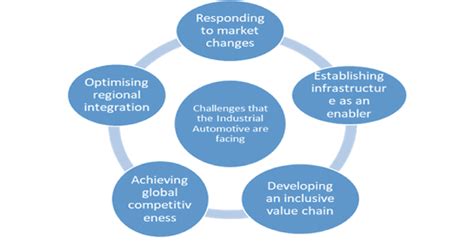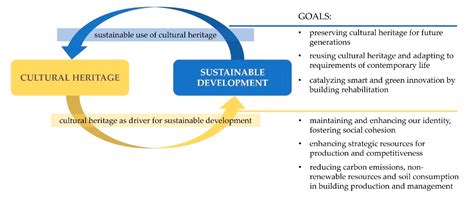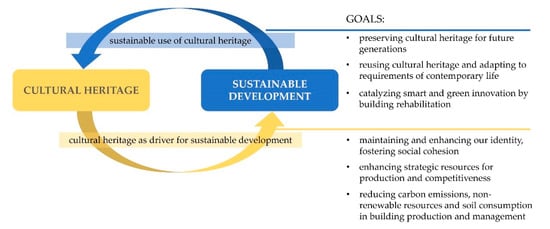Cultural Resource Management (CRM) is a critical field dedicated to the preservation and protection of cultural heritage for future generations. As the world continues to modernize, the significance of safeguarding historical sites, artifacts, and traditions becomes increasingly vital. This article delves into the evolution of CRM, exploring its foundational principles, ethical considerations, and the strategies employed to identify and document cultural resources. By examining the challenges faced in preserving heritage and the role of technology in enhancing CRM efforts, we will highlight successful case studies and discuss the legal frameworks that support these initiatives, ultimately offering insights into future trends and innovations in the field.
ritarblog.com will explore this topic comprehensively.
1. Definition and Importance of Cultural Resource Management (CRM)
Cultural Resource Management (CRM) is the practice of safeguarding and preserving cultural resources. These resources encompass a variety of tangible assets including historic sites, artifacts, structures, and landscapes that hold significant cultural, historical, or archaeological value. The emergence of CRM stemmed from the increasing recognition of the importance of heritage conservation amidst expanding development and urbanization. It encompasses a diverse array of activities, ranging from site surveys and documentation to the creation of protective strategies and the integration of these practices into comprehensive land use planning.
Cultural Resource Management (CRM) is essential for protecting the tangible and intangible heritage that shapes communities and nations. Through the preservation of these cultural resources, CRM not only maintains historical continuity but also deepens our understanding of diverse cultures and histories. Moreover, CRM plays a vital role in educating future generations about their cultural heritage, fostering a sense of identity and belonging. By effectively safeguarding and appreciating cultural resources, CRM ensures that a lasting legacy is preserved for future generations to learn from and enjoy.

2. Historical Overview of CRM Practices
Cultural Resource Management (CRM) has undergone a significant evolution, its roots firmly planted in the early endeavors to protect and preserve historical landmarks. The preservation movement emerged in the 19th century, driven by the rapid industrialization and expansion that posed a threat to numerous historical sites. These initial efforts were often spearheaded by local communities and passionate individuals who understood the importance of safeguarding their cultural heritage. These early actions provided the foundation for the development of more structured approaches to heritage conservation.
The 20th century witnessed a transformative period for Cultural Resource Management (CRM), marked by the creation of legal frameworks and government agencies dedicated to protecting cultural heritage. In the United States, for example, the passage of the Antiquities Act of 1906 and the National Historic Preservation Act of 1966 provided legal safeguards for significant sites and artifacts, solidifying the field of CRM. This era also saw the rise of archaeology as a professional discipline, further refining the methodologies employed in CRM.
The increasing global awareness of cultural heritage prompted international organizations like UNESCO to champion the conservation of world heritage sites. This initiative spurred the development of global standards and practices for cultural resource management (CRM), shaping the field as it stands today.

3. Key Principles and Ethics in CRM
Cultural Resource Management (CRM) operates under a set of core principles and ethical guidelines that prioritize the responsible care of cultural heritage. Paramount among these is a deep respect for the cultural significance of the resources being managed. This principle entails acknowledging the inherent value of historical sites, artifacts, and traditions, recognizing their importance to the communities that hold them dear. Upholding the cultural context further necessitates engagement with local communities, ensuring their voices and perspectives are central to the decision-making process.
A central tenet of this field is the application of rigorous scientific and professional standards to the identification, documentation, and preservation of cultural resources. This involves employing meticulous methods in archaeological surveys, historical research, and conservation techniques, ensuring that resources are accurately evaluated and managed responsibly. Transparency and accountability are paramount, as CRM professionals must clearly articulate their methodologies, goals, and the potential effects of their work.
Ethical CRM practices underscore the importance of sustainability in cultural resource management. Preservation efforts should prioritize the long-term viability of these resources while maintaining their integrity. Moreover, CRM professionals are obligated to prevent the commercialization or exploitation of cultural heritage, ensuring that these resources are not treated as commodities but rather preserved for educational and cultural enrichment. In essence, these principles and ethical guidelines are crucial for safeguarding cultural heritage for future generations.

4. Strategies for Identifying and Documenting Cultural Resources
Cultural Resource Management (CRM) relies heavily on the identification and documentation of cultural resources, demanding a systematic and comprehensive approach. The initial step usually involves conducting surveys and assessments to locate these resources, which may include archaeological sites, historical buildings, or landscapes with cultural significance. These surveys often employ a combination of methods, such as fieldwork, archival research, and geographic information systems (GIS) to map and document these sites.
The documentation process commences once cultural resources have been identified. This involves meticulously recording these resources through various means, such as photographs, drawings, written descriptions, and even 3D models. This documentation is crucial for comprehending the historical and cultural significance of these resources, and for formulating effective preservation plans. Active engagement of local communities is paramount in this process, as they possess invaluable knowledge and perspectives that may be inaccessible through external research. Comprehensive documentation safeguards the original context of cultural resources and lays the groundwork for future conservation endeavors.
5. Challenges in Preserving Cultural Heritage
Preserving cultural heritage is a complex endeavor, demanding meticulous planning and consideration of both practical and ethical concerns. A significant challenge arises from the forces of development and urbanization, which pose a threat to historical sites. As cities grow and new infrastructure emerges, cultural resources are often vulnerable to damage or complete loss.
Environmental factors represent a substantial threat to cultural heritage. Natural disasters, such as earthquakes, floods, and wildfires, can inflict irreversible damage on historical sites and artifacts. Furthermore, the consequences of climate change, including rising sea levels and extreme weather conditions, further intensify the susceptibility of cultural resources.
Securing funding and allocating resources effectively presents another obstacle. Preservation endeavors frequently demand substantial financial commitment and ongoing support, which can be elusive. This is particularly true in regions where economic imperatives overshadow cultural concerns. Furthermore, the illicit trade in cultural artifacts poses an ongoing threat. Looting and illegal trafficking jeopardize the integrity of cultural heritage across the globe.
The preservation of intangible cultural heritage, such as languages, traditions, and practices, presents another significant challenge. As globalization and modernization exert their influence on cultural identities, safeguarding these non-physical aspects of heritage becomes increasingly vital. This is crucial to ensure that future generations inherit these elements undiluted and intact.
6. Role of Technology in Enhancing CRM
Technology is an indispensable element in advancing Cultural Resource Management (CRM) by providing cutting-edge tools for identifying, documenting, and safeguarding cultural heritage. Geographic Information Systems (GIS) and remote sensing technologies, like LiDAR, enable precise mapping and analysis of archaeological sites, even in remote locations. These technologies empower CRM professionals to uncover concealed structures and landscapes, revealing insights previously beyond reach.
Digital documentation techniques, such as 3D modeling and photogrammetry, have transformed the way we record and preserve cultural resources. These methods generate precise digital copies of artifacts and sites, facilitating research, restoration, and public education. Furthermore, databases and digital archives ensure the secure storage and easy access of information about cultural resources for both researchers and the public.
Furthermore, virtual reality (VR) and augmented reality (AR) are employed to generate immersive experiences. These technologies empower individuals to explore and gain knowledge about cultural heritage in innovative and captivating ways, thereby expanding the reach and effectiveness of CRM initiatives.
7. Case Studies of Successful CRM Projects
The successful implementation of preservation techniques and strategies is demonstrated in numerous Cultural Resource Management (CRM) projects. One prominent example is the preservation of Pompeii, Italy. Since its excavation, extensive CRM efforts have been dedicated to stabilizing and restoring the site to prevent further deterioration. Advanced conservation techniques, such as digital imaging and climate control systems, have been utilized to safeguard the long-term preservation of this ancient Roman city.
The digitization of the Dead Sea Scrolls stands as another triumph in the realm of cultural preservation. Through a collaborative effort between the Israel Antiquities Authority and international partners, high-resolution imaging techniques were employed to produce meticulous digital replicas of these ancient texts. This initiative served a dual purpose: safeguarding the fragile manuscripts from physical wear and tear while simultaneously making them readily available to scholars and the global community.
The National Park Service’s Cultural Resources Management (CRM) initiatives at Gettysburg National Military Park showcase the successful blending of historical research and contemporary preservation methods. By employing thorough mapping and documentation, the park ensures the preservation of its historical integrity while providing access for visitors.
These case studies highlight the vital role of integrating traditional preservation techniques with contemporary technology in realizing effective cultural resource management (CRM). Each project exemplifies the power of CRM to safeguard and deepen our understanding of cultural heritage through meticulous planning, cutting-edge approaches, and collaborative partnerships.
8. Legal and Policy Frameworks Supporting CRM
Legal and policy frameworks play a vital role in supporting Cultural Resource Management (CRM) by providing the essential guidelines and regulations that underpin effective preservation efforts. In the United States, the National Historic Preservation Act of 1966 established a formal framework for safeguarding historical and cultural sites, mandating that federal agencies assess the potential impact of their projects on cultural resources. This landmark legislation resulted in the creation of the National Register of Historic Places, a comprehensive inventory that catalogs significant sites and landmarks across the nation.
The UNESCO World Heritage Convention, established in 1972, serves as a cornerstone of global heritage protection. It encourages member nations to safeguard their cultural and natural heritage sites and fosters international collaboration in conservation endeavors.
National and regional policies play a vital role in CRM by establishing standards for the management and protection of cultural resources. These policies often mandate archaeological surveys, historical site assessments, and public engagement in preservation decisions. This legal and policy framework fosters a collaborative and structured approach, ensuring the safeguarding of cultural heritage.
9. Future Trends and Innovations in CRM
Cultural Resource Management (CRM) is on the cusp of significant advancements, driven by emerging trends and innovations that will bolster preservation efforts. Notably, the integration of advanced technologies, including artificial intelligence (AI) and machine learning, is poised to revolutionize threat analysis and prediction. These powerful tools will enable more efficient identification of patterns and potential risks, facilitating proactive management strategies for safeguarding cultural resources.
Blockchain technology is another innovation that is being used to track and protect cultural artifacts. Its secure and transparent ledger system can help combat the illicit trade of cultural heritage by providing an immutable record of ownership and provenance.
Moreover, the use of immersive technologies such as virtual reality (VR) and augmented reality (AR) is gaining traction in customer relationship management (CRM). These tools present novel avenues for engaging the public and stakeholders through interactive experiences. VR and AR allow users to remotely explore and comprehend cultural heritage sites and artifacts.
Collaborative approaches are gaining traction in CRM, driven by global partnerships and community engagement. These collaborations harness diverse expertise and resources, promoting more inclusive and effective preservation practices.
In conclusion, these emerging trends and innovations will revolutionize CRM, making heritage preservation more dynamic and accessible, all while guaranteeing the effective safeguarding of cultural resources.
Effective Cultural Resource Management (CRM) is essential for preserving our global heritage and ensuring that cultural resources are safeguarded for future generations. By understanding CRM’s foundational principles, historical evolution, and contemporary challenges, we can appreciate the critical role of technology and innovative strategies in enhancing preservation efforts. Successful case studies and robust legal frameworks underscore the importance of these practices. As CRM continues to evolve, embracing new trends and collaborative approaches will be key to maintaining and enriching our shar
ritarblog.com

